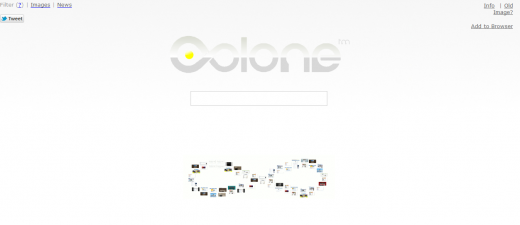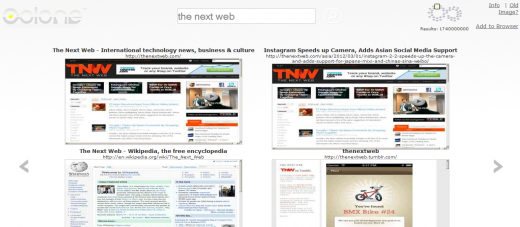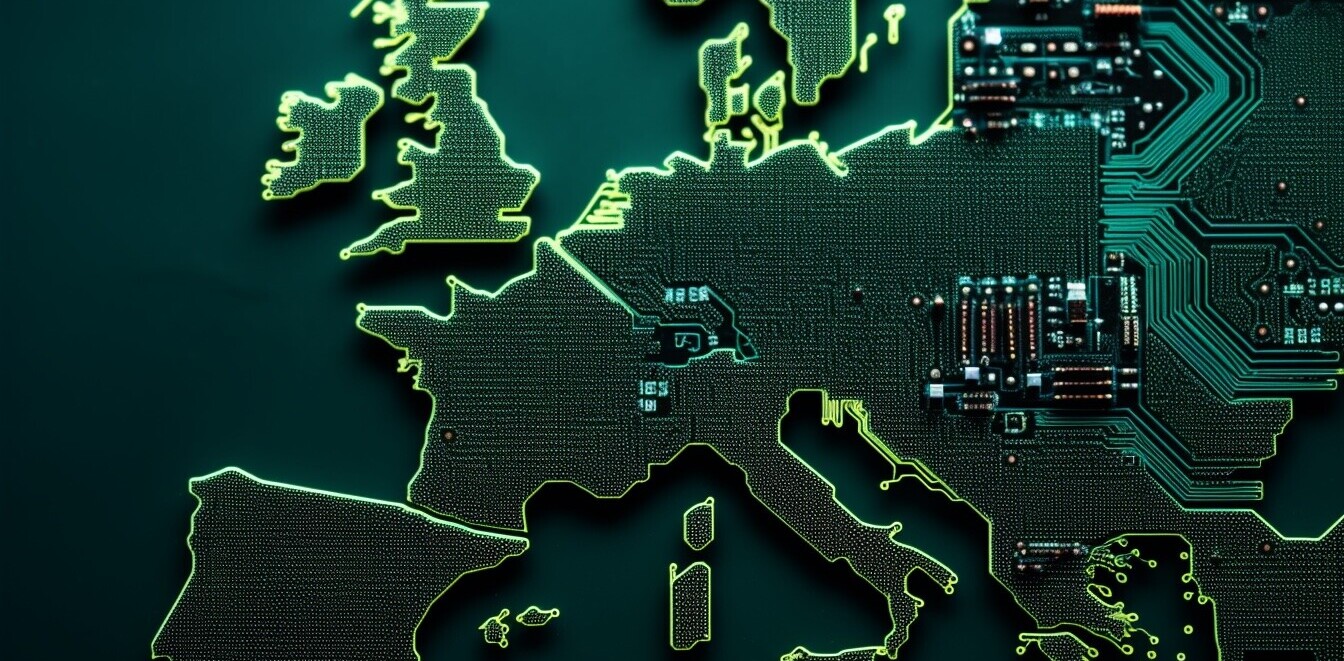
With Google ruling the roost, Bing sitting in the wings as a viable alternative, and the once-mighty Yahoo! still there for those that want it, you could be forgiven for thinking that the search engine market is, well, covered. Indeed, surely any attempt to disrupt this is destined to fail? But that certainly doesn’t stop people from trying.
Last year we reported on Ecosia, a ‘green’ search engine that returns results from Bing and Yahoo. And whenever you click a sponsored search result, Ecosia gets a chunk of the revenue and passes at least 80% of it on to WWF to support its work in the Amazon rainforest. Then there’s Blekko, the “spam-free” search engine.
There are many other examples of search engines that you likely haven’t heard of before. And now, a UK doctor has launched one search engine “designed to tap into human beings’ natural ability to work with images”.
Oolone is described as a ‘visual search engine’ which displays search results as images of the websites rather than blue links above blocks of text, as Googlers may be more familiar with.
“Research has shown that we’re not particularly well suited to read,” says Chris Whittle a London-based neuroscientist. “In fact, we seem to be naturally programmed to make judgments by scanning images.”
“Many studies have shown that people are automatically drawn to images over text,” he continues. “Not only do we prefer images, but they’re more useful to us because image-judgment uses whole brain networks, which implies a more holistic analysis.”

With the tagline of ‘Open Your Eyes to the Web’, the search engine was launched to improve the way that we interact with the Internet.
Another problem the founders hope to solve is accuracy. Current search engine users find themselves clicking a link only to find that the site displayed does not contain the information that they required. The ‘back’ button is then their savior.
The founders claim that as we have become more adept at using the Internet, we are now more ‘in tune’ with what useful websites look like. “We can make instant decisions on whether a particular site is going to be useful to us, for example, by seeing a similar layout to a site which has been useful to us in the past,” says Chris. “Conversely, by seeing an abundance of advertisements on a page, we can pick and choose which sites not to visit.”
The search engine displays 4 images of websites per page with options to scroll sideways to see more results. To further enhance the browsing experience, you can also hover over each image and a tile enlarges each site preview to get a clearer view of the image. It also has options for news and image search.

While it’s difficult to get overly enthusiastic about another search engine proclaiming to disrupt the long-established (and, seemingly, quite popular…) way of searching for things on the Web, it is certainly good to know that there are people out there working behind the scenes to innovate, and help define what the future of the Web could look like.
Indeed, Oolone is a nice idea, albeit the website snapshots are quite low-resolution and thus detracts from the overall look-and-feel of an otherwise nice (Google-inspired…) interface.
Oolone’s other founder is Jon Whittle, Chris’s brother, who describes himself as an “entrepreneur with interests on and offline,” and he says the future of the search engine is still very much open.
“The site is currently self-funded, and we’re not ‘actively’ seeking funding but would be open to it if any opportunities arose,” says Jon. “We don’t want to throw up adverts too early, but will look to monetize at some point.”
➤ Oolone
Get the TNW newsletter
Get the most important tech news in your inbox each week.




